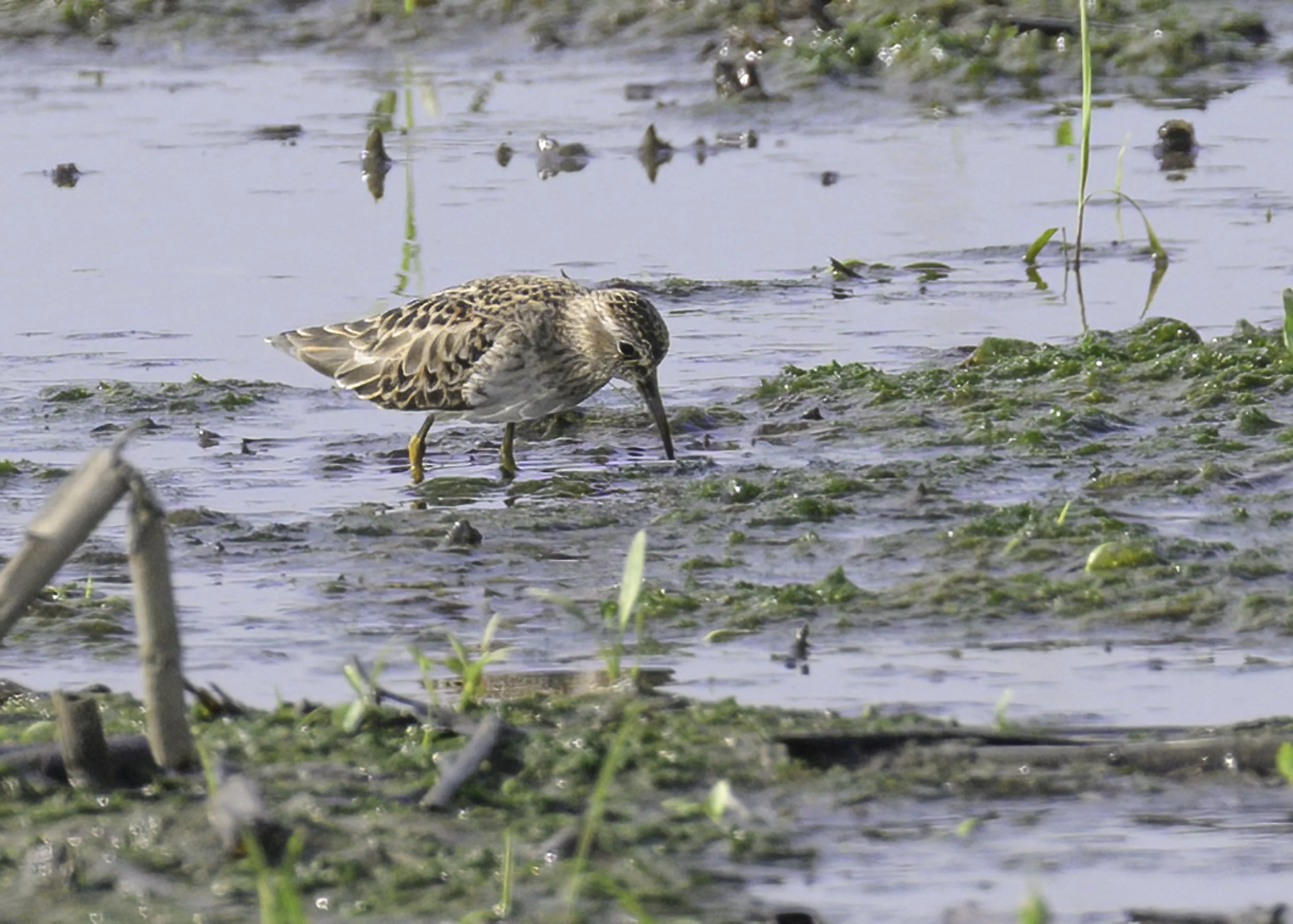Marsh birds
The Common yellowthroat is one of our most widespread warblers across the entire continent. The descriptor ‘Common” can be a bit deceiving, however, as it implies you’ll see this bird everywhere. Well, he may be almost everywhere, but the chances of seeing one are slim unless you spend the time and effort to find him. The easiest way to find him is to listen for the song…”Whichity, whichity, whichity” in a heavily vegetated area near water. With luck, you may see movement in the grasses and finally see him pop out for a brief moment. Today’s goal was to find some of the “marsh birds” at one of my favorite local places to bird, Iona Island. On my list of hopefuls today were two no-shows, the Virginia rail and the Marsh wren. The Yellowthroat is such a beautiful bird, however, that I’ll take this as a fine consolation prize for today’s blog post.
Two marsh birds I was not expecting were found by two friends I spend a great deal of time with up on Bear Mountain during the fall hawkwatch. As I was heading off the island, i found two cars parked with two fellows who were obviously birding….binoculars, scopes and field guides in hand. It was my birding buddies who told me to pull over and get a look at several Least sandpipers picking through the mudflats. This is prime habitat for these birds, but I had not seen any sign of then so far this year. These were nice looks at 5 of them at relatively close range. I jumped out, camera in hand, and started shooting.
Least sandpipers are in a group birders refer to as “Peeps”. They are among the smallest of sandpipers with their “cousins” the Western sandpiper and the Semipalmated sandpiper. The easiest way to distinguish the Least from the others is by the color of the legs. Least are the only “peeps” that have yellow legs as can be seen in today’s image. Both the Least and the Western have slightly drooping bills that rule out the Semipalmated which has a straight bill. When seen from the back, the Least plumage gives the appearance of two white lines running down the back One of those can be seen in the bird above.
Solitary sandpiper
As we studied the 5 Least sandpipers working the mudflats, a larger bird flew in. The obvious white eye-ring on this bird told us immediately that this was a bird known as the “Solitary sandpiper”. The Solitary Sandpiper is a slightly larger shorebird known for its distinctive greenish-gray plumage and bright yellow-green legs. Primarily found in North America during migration, this bird is often spotted alone in wetland habitats, probing the mud for insects and crustaceans with its long, slender bill. Its plaintive call and solitary nature, combined with its striking appearance, make it a fascinating subject for bird watchers and photographers alike. In addition to its intriguing behavior, the Solitary Sandpiper plays a vital role in its ecosystem by helping to control insect populations and serving as an indicator of wetland health.
Eventually, the two species wandered in close proximity to one another giving us a nice size comparison between the two. As far as sandpipers go, the Solitary is considered a “small” sandpiper. But when you see the two species we were watching today standing close to one another, it is easy to see how the “Least” got its name.
Solitary (back) and Least (forward) sandpipers seen side by side.
What a treat to see these sandpipers out on the mudflats of Iona Island. To be sure, I will be looking much more carefully out at this habitat each time I visit the Island to see if anything new has shown up on its migratory path. We know that the minimal distance both of these species have traveled to get here is from the southern United States, but many winter in Central and South America. So, who knows how far these birds have flown to get to New York?
Last shot of the day is of an Osprey which has taken up residence atop the Bear Mountain Bridge. Another iconic bird of the marsh, it is wonderful to see this bird actually nesting so close to our home.




